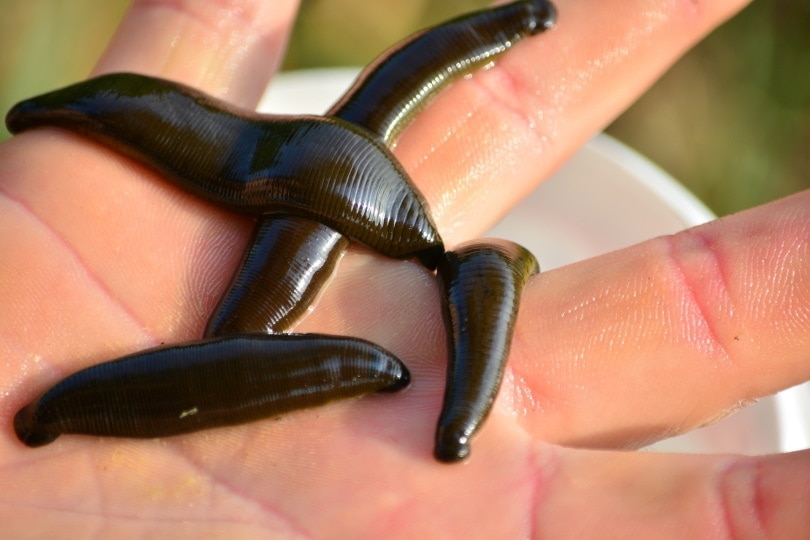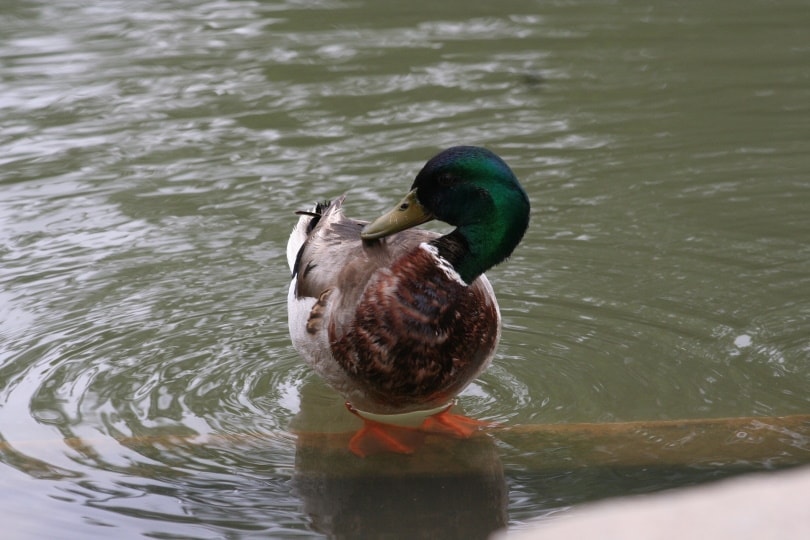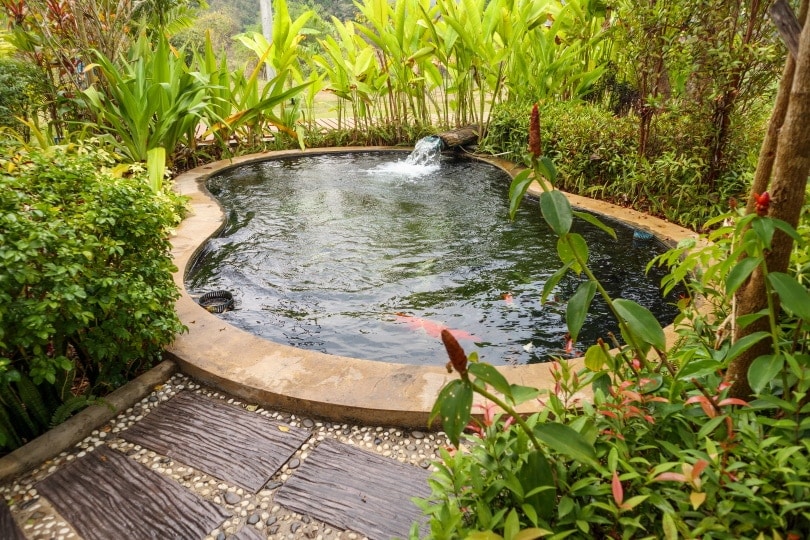Giant blood-sucking leeches are the stuff of horror films, which is probably why most of us are so creeped out by them, especially when they are swimming with you in your pond. Getting them out of your pond could be prompted by this fear, but they are not harmful to the health of humans.
There are other reasons to get leeches out of your pond, like restoring some balance in your pond’s ecosystem. Whatever the reason, we are here to help you with ways to get those leeches out of your pond and prevent them from getting there in the first place.

What are Leeches?
Leeches are small worms that can live in the water or on land. They are closely related to the earthworm and can lengthen and contract like other worms. They swim in the water as a snake or eel does. Some leeches are bloodsucking, attaching themselves to animals, humans, and even fish at times, but not all species of leech feed on blood. Some only eat plant matter.
They love to hang out in decomposing debris at the bottom of your pond, and are attracted to and will swim toward stirred-up water in the pond.


The 5 Ways to Get Rid of Leeches in a Pond (Without Harming Fish)
1. Inspect Pond Supplies and Quarantine Before Introducing Them
This method of removing pond leeches is all about prevention. Sometimes, leeches or their eggs can get a piggy-back ride to your pond on any vegetation, fish, or even rocks, that you introduce to your pond. Luckily, if they get there by way of plant, this type is not typically blood-sucking.
Before you introduce anything new to your garden pond, place your newcomers into their aquariums or bins (in the substrate they came in) for at least 1 week and up to 4 weeks. For plants, make sure they get some sunlight during the day.
2. Clean Out Debris Regularly
Since leeches love the environment of decomposing plant matter at the bottom of the pond, you can get rid of leeches by taking away their favorite home. This can be done with a pond rake or a pond vacuum. A good pond rake will be able to get floating debris from the top and all the settled debris on the bottom of the pond.
A pond vacuum will be the more expensive choice but is faster and possibly more effective at sucking up pond debris. Not only does this help control the leech population, but it also improves the quality of the water for all your pond inhabitants.
3. Add (The Right Kind of) Fish
Fish leeches are somewhat rare, but you will want to watch out for them if you have goldfish or koi fish. These types of leeches do not typically attach themselves to other kinds of fish, which are also more likely to eat leeches. If you’d like to decrease your leech population by adding fish, you can supply your pond with almost any kind of fish to do this. However, the most aggressive leech hunters are bass and sunfish.
4. Add Beneficial Bacteria
If you can’t (or don’t want to) physically remove the algae and other pond junk from your pond, there’s another way. You can buy a product made with bacteria that eat away at the muck in your pond instead, therefore making an uninhabitable environment for leeches. This method is easier to implement and takes less time, however, it will take time for the pellets to dissolve and the results will not be immediate.
Most of the products with this bacteria are safe for all living things in the pond, including fish and humans. However, you do not want to drink the water that has been treated with this product.

5. Make or Buy Leech Traps
Blood-sucking leeches can be captured with leech traps. Leech traps can be purchased online or easily made at home. Manufactured leech traps are made for aquariums, but they can be used for ponds as well. DIY leech traps can be made from aluminum cans or coffee cans with small holes punched in.
With either type of trap, put some smelly meat inside (like chicken livers) and set the trap in a shallow part of the lake. Once the leeches enter the trap, they are unable to get out. After 24 hours, you should have caught some. If you haven’t caught any, you may need to try different bait. Or, your other methods have rid your pond of leeches successfully!

How Do Leeches Get in My Pond?
Those small, black, wiggly creepy crawlers usually appear in your pond by hitching a ride, either as adults or as eggs. The eggs are so tiny that you won’t be able to see them. Most commonly, waterfowl like ducks or geese have carried them in from a nearby pond and deposited them into your pond.
Other times, the leeches come from pond plants you introduce to the pond. The easiest way to keep leeches from getting into your pond in the first place is to quarantine your plants before adding them to your pond.

Is It Safe to Swim in a Pond with Leeches?
Besides giving you the creeps, there’s nothing wrong with swimming in a pond with leeches in it. To date, there are no known diseases that leeches can spread to humans. When they suck blood, they only take a minuscule amount, not enough to cause any harm.
If you get a leech on you, simply stick your fingernail or something similar (like a credit card) under the jaws of the leech to detach it. Make sure it doesn’t fall on another surface area of your skin, or it may reattach itself.

Final Thoughts
We have gone over the main and most safe methods to clean your pond of leeches. You may have heard that salt also can be used to kill leeches in your pond. Salt is effective, but it could be devastating to other life in your pond.
It takes some work, but getting leeches out of your pond will help you and any guests you may have at your pond for recreational purposes be more at ease. Although leeches are harmless to humans, they are quite pesky. We hope you enjoy your leech-free pond and hope that you can stay on top of cleaning to keep it that way.
Featured Image Credit: Kwangmoozaa, Shutterstock
